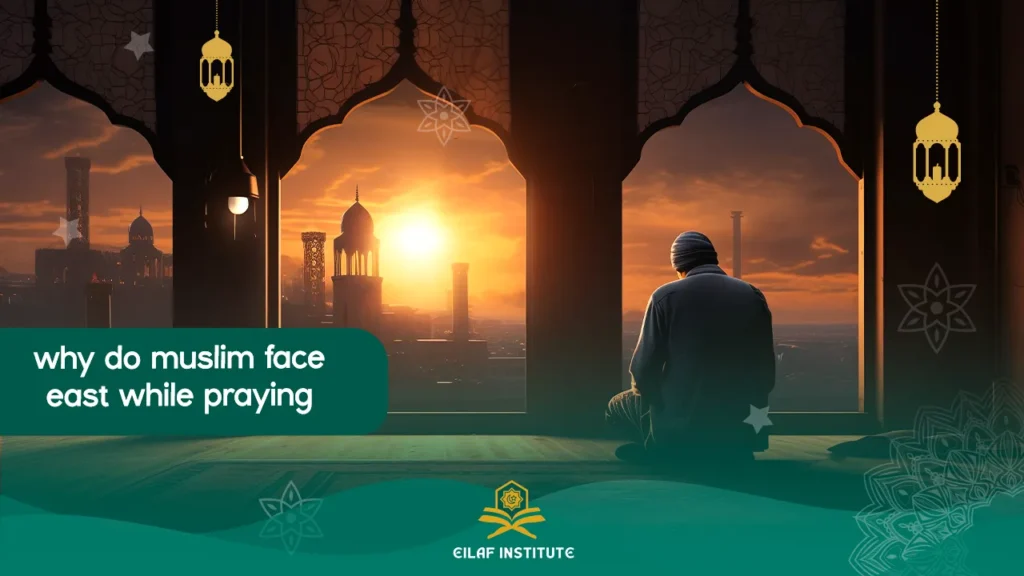A common observation about Islamic prayer is the unified direction Muslims face, but this often leads to a misconception and the question, “Why do Muslim face east while praying?” The simple answer is: they don’t always. Muslims face a single, unified direction known as the Qibla, which is the Kaaba in Mecca, Saudi Arabia.
This article will explain the significance of the Qibla, clarify the misconception about facing east, and explore the deep spiritual unity this practice creates for over a billion Muslims worldwide.
Why Do Muslim Face East While Praying? The Correct Answer
The idea that Muslims pray to the east is only true for those located geographically west of Mecca. For example, a Muslim in North America or Western Europe would face in a generally southeastern or eastern direction to align with the Qibla. However, a Muslim in Japan or Australia would face west, and a Muslim in South Africa would face north.
The direction is not east; the direction is the Kaaba. This is a direct command from Allah in the Quran:
“So turn your face toward Al-Masjid Al-Haram (the Sacred Mosque), and wherever you are, turn your faces toward it.” (Quran 2:144)
Therefore, the correct question isn’t “Why do Muslim face east while praying?” but rather, “Why do Muslims pray towards Mecca?” Facing the Qibla is an act of obedience and a powerful symbol of unity, connecting every Muslim, everywhere, in a single act of worship.
Read also about: When to say Allahumma Ameen and its meaning?
The Kaaba: The Focal Point of Muslim Prayer
The Kaaba, a cube-shaped structure in the center of the Grand Mosque in Mecca, is the most sacred site in Islam. It is not an object of worship itself, but a central point (Qibla) that directs a Muslim’s heart and intention toward the one true God, Allah.
- Historical Significance: It was built by Prophet Ibrahim (Abraham) and his son Isma’il (Ishmael) as the first house dedicated to the worship of one God.
- Symbol of Monotheism: It represents the pure monotheistic roots of Islam, rejecting all forms of idolatry.
- Unity and Equality: The Kaaba serves as a unifying direction, symbolizing that all Muslims, regardless of their location, race, or status, are equal before Allah.
Common Questions About the Islamic Direction of Prayer
Understanding the concept of Qibla helps clarify many related questions about Islamic worship.
Do Muslims Worship the Kaaba?
No, Muslims do not worship the Kaaba or the Black Stone within it. Worship is directed only to Allah. The Kaaba is a focal point that unifies the direction of prayer. Kissing or touching the Black Stone is an act of reverence and following the Sunnah (practice) of the Prophet Muhammad ﷺ, not an act of worship toward the stone itself.
Try now The Five Pillars of Islam course
How Do Muslims Find the Qibla Direction?
Muslims use various methods to determine the correct direction for prayer (which way do Muslims pray).
- Traditional Methods: Historically, Muslims used the position of the sun, stars (like the North Star), and geographical knowledge.
- Mosques: Every mosque is built with a Mihrab, a niche in the wall that indicates the precise Qibla direction.
- Modern Technology: Today, finding the Qibla is easy with tools like Qibla compasses, smartphone applications, and GPS-based websites.
Why Do Muslims Pray Five Times a Day?
Praying five times a day (Salah) is one of the Five Pillars of Islam and an obligatory act of worship. These five prayers, Fajr (dawn), Dhuhr (midday), Asr (afternoon), Maghrib (sunset), and Isha (night), are a direct line of communication with Allah. This daily practice fosters spiritual discipline, mindfulness, and a constant connection with the Creator.
Read also about : how does praying affect the daily lives of muslim
The Spiritual Unity Behind the Qibla
We have now learned that the answer to “Why do Muslim face east while praying?” depends entirely on one’s location. The true principle is facing the Kaaba, which serves as a profound symbol. It is a spiritual anchor that connects the global Muslim community, reminding them of their shared faith, purpose, and submission to the will of Allah. To ensure your prayer is valid, finding the correct Qibla is essential.
To deepen your understanding of Salah and other Islamic practices, you can explore the expert-led courses at Eilaf. Our instructors can guide you in perfecting your worship and avoiding common mistakes.

